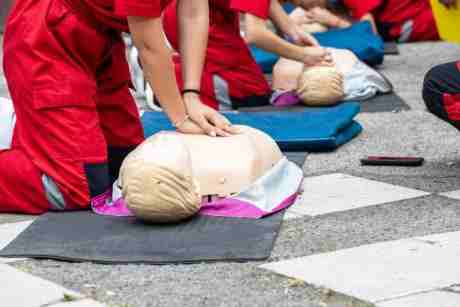A first aid course will teach you the basics of identifying and responding to emergencies like burns, cuts, poisoning, choking and much more.
Anyone can benefit from knowing how to respond to a medical emergency. First-aid knowledge can help reduce injury severity, promote healing and reassure the victim that help is on the way.
1. Know Your Limits

CPR and first-aid classes are available at hospitals, fire departments, community health centers, and even some online training providers. Make sure the class you choose is accredited and meets the requirements of your employer or industry.
Students should also look for a hands-on course that offers practical experience with chest compressions, use of an automated external defibrillator (AED), and two rescuer team work. The ability to practice skills is a great confidence booster for learners and makes them more likely to remember them in an emergency situation.
Children are known to be prone to accidental injuries such as falls, burns, and bee or insect stings. Knowing first-aid and CPR can help protect the young ones in your care. In fact, studies have shown that caregivers with CPR and first-aid training are 2.5 times more likely to contact medical services when an accident occurs.
2. Know Your First-Aid Kit
A first aid kit is a handy tool to have at hand in an emergency. A good one is easy to open, contains a variety of supplies and is easily portable.
It’s a good idea to keep one at home, in the car and at work. It should be well organised and properly stocked. Specialised kits are also available to meet specific needs, click over here.
Store the kit somewhere that’s easy to find, “like you would a fire extinguisher,” Dr Waters says. And make sure everyone in the family knows where it is. Kids are especially prone to getting cuts, scrapes and bee stings. Having an appropriate first-aid kit, along with the skills to use it, could save their lives if they get seriously injured or ill.
3. Be Prepared
First-aid and CPR training provides you with the knowledge to treat a person with an injury, illness or other medical emergency until more advanced medical treatment is available. Whether it’s required by work, you want to be prepared at home or you simply want the peace of mind that comes from knowing what to do in an emergency, these skills can save lives.
Keep in mind that while many first-aid courses include CPR, if it’s not stated as part of the course, you’ll need to take two separate classes. A CPR certification will help you resuscitate someone who has suffered cardiac arrest, while a first-aid certification allows you to address more general injuries like broken bones, sprains and infections.
4. Know the Rules of the Game
CPR and first aid certification helps people to care for victims of emergencies until paramedics arrive. These skills may be needed for anything from a minor workplace accident to a heart attack. It is important for everyone, from school children to adults and seniors, to know these lifesaving skills.
Firefighters and other emergency personnel also need to be trained in CPR and first aid. They never know what they will encounter on a shift, from someone falling off a ladder to a car accident.
Being able to assess an emergency scene and act quickly can buy time, which is critical when someone’s life is in danger. It’s also important to remember to call 911, as professional medical help should be sought as soon as possible.
5. Be Prepared
A heart attack, stroke, choking, or other medical emergency can happen to anyone. Being prepared with CPR and first-aid training can help you save someone’s life until professional help arrives.
Kids are notorious for putting anything into their mouths, including bugs and toys. They also get scrapes and cuts, and it’s essential to know how to deal with these emergencies. First-aid training will teach you how to check for a pulse and breathing, control bleeding, use an Epi-Pen, treat an allergic reaction, and more.
Summary:
Be sure to choose a course that includes CPR training. Many courses will not include it in the name, so be sure to read the description. It’s also a good idea to sign up for a course with online practice exams and retakes, like SimpleCPR’s available options.